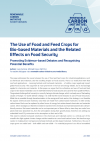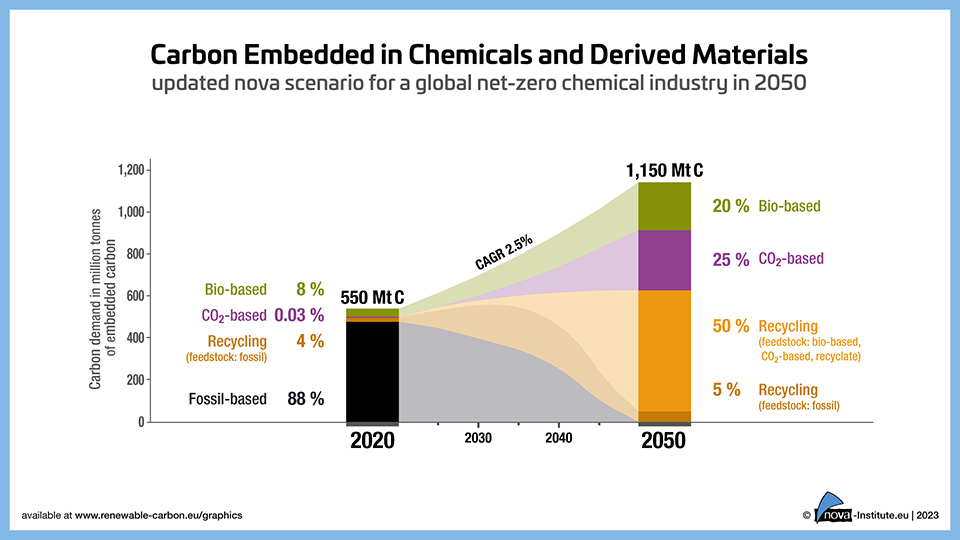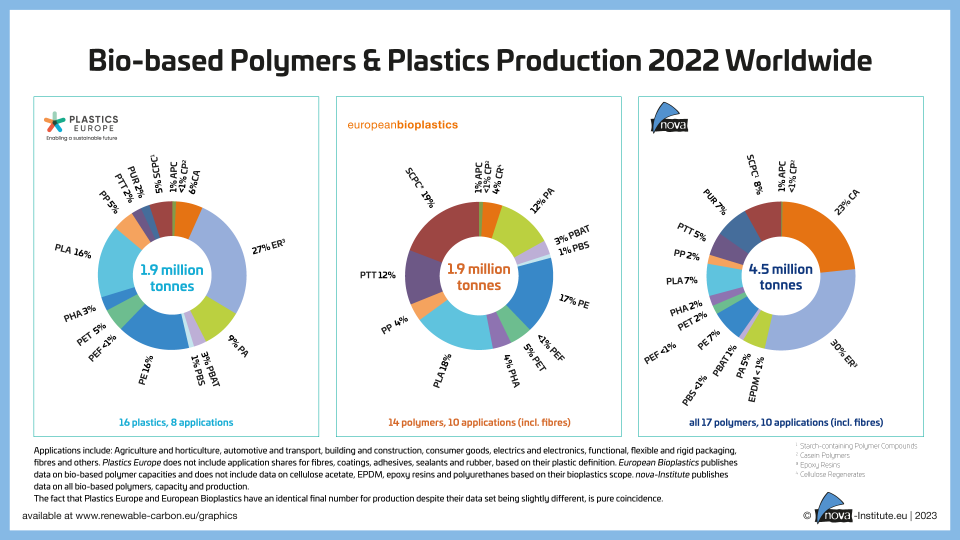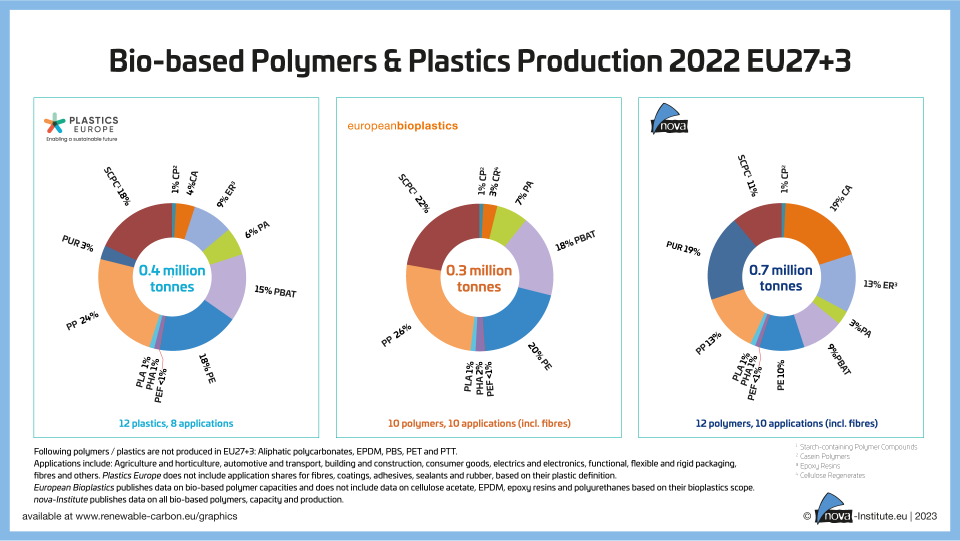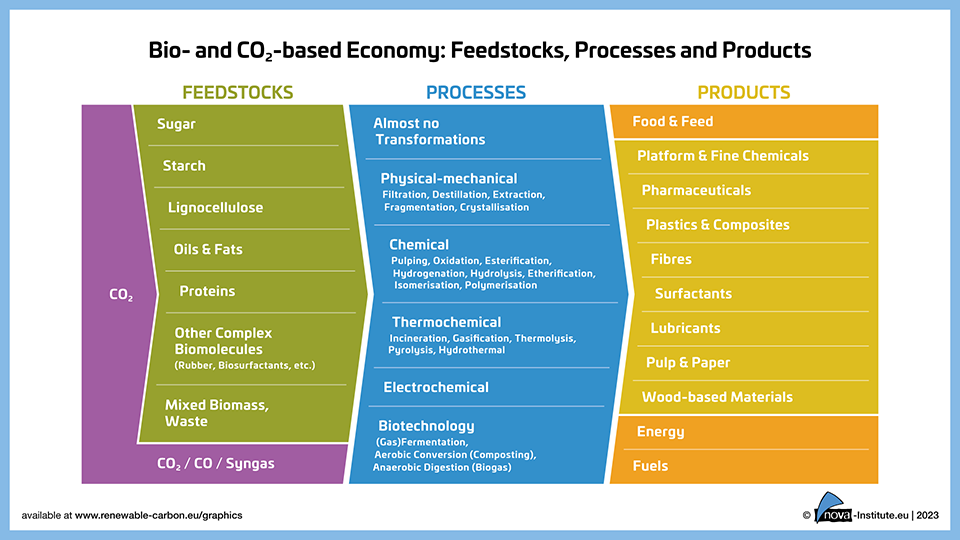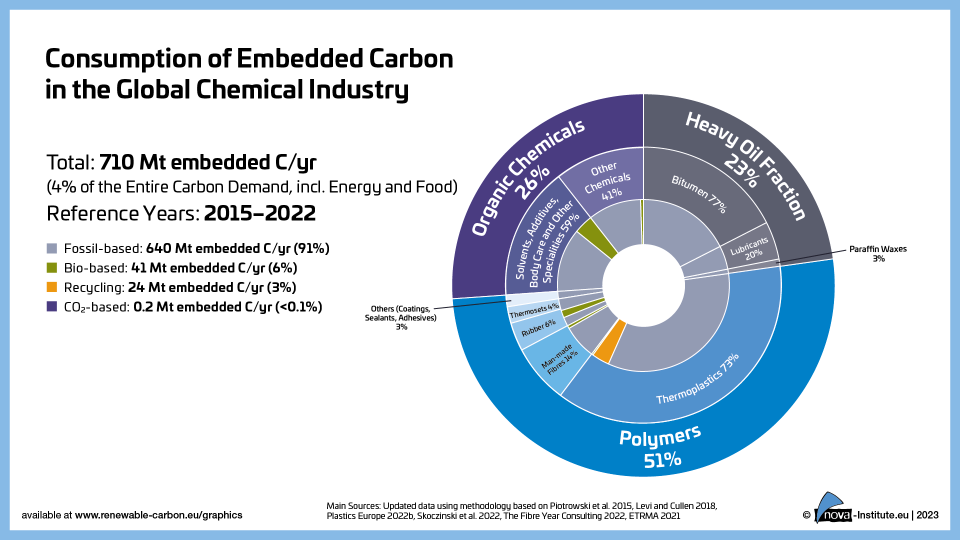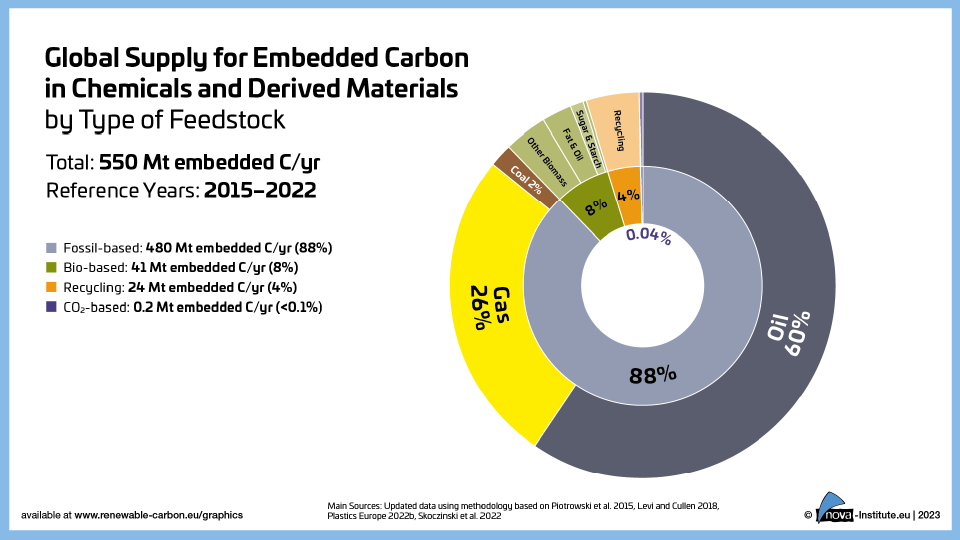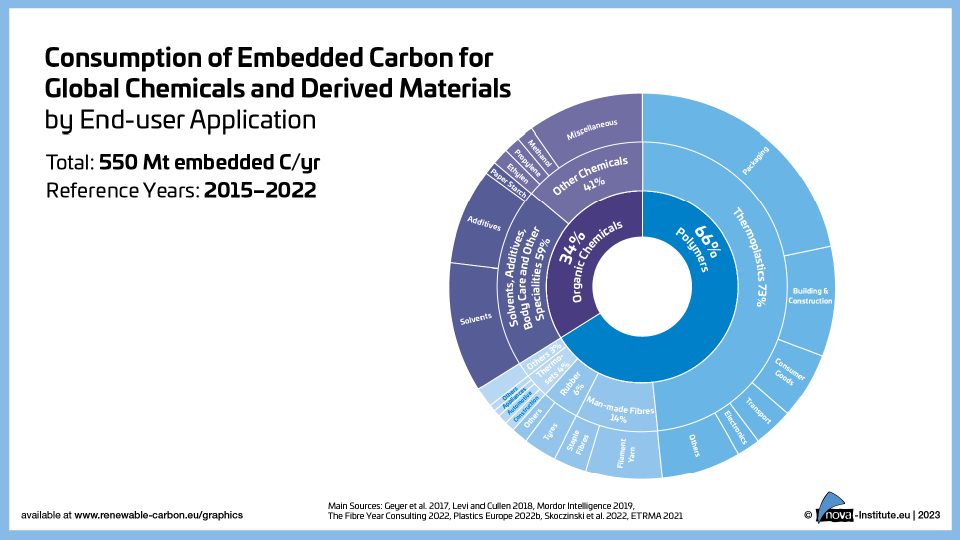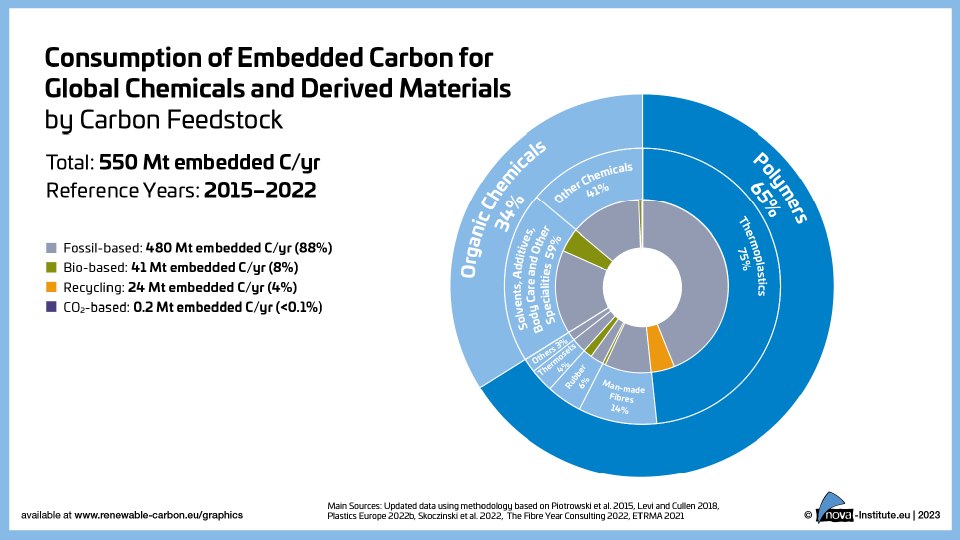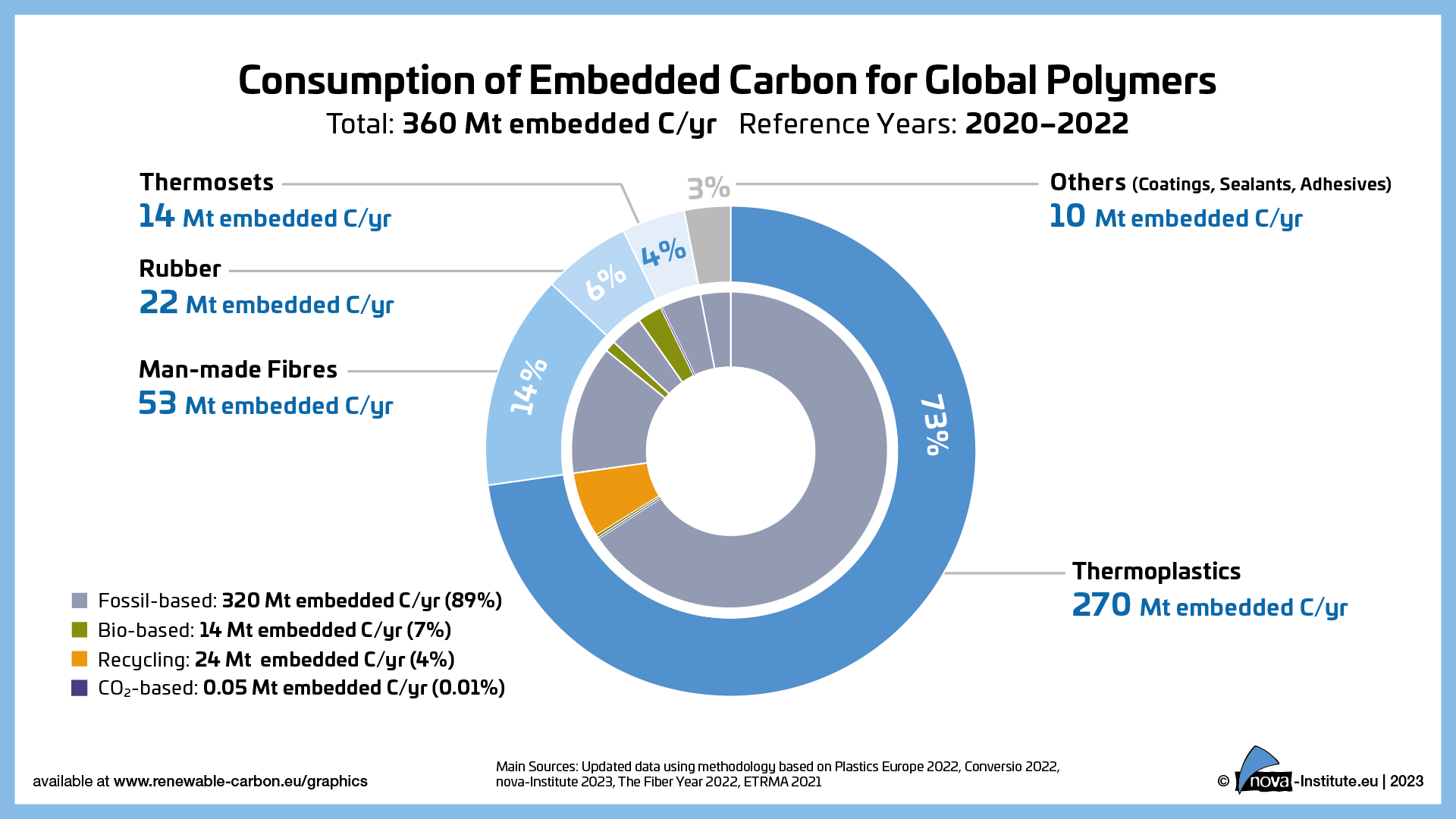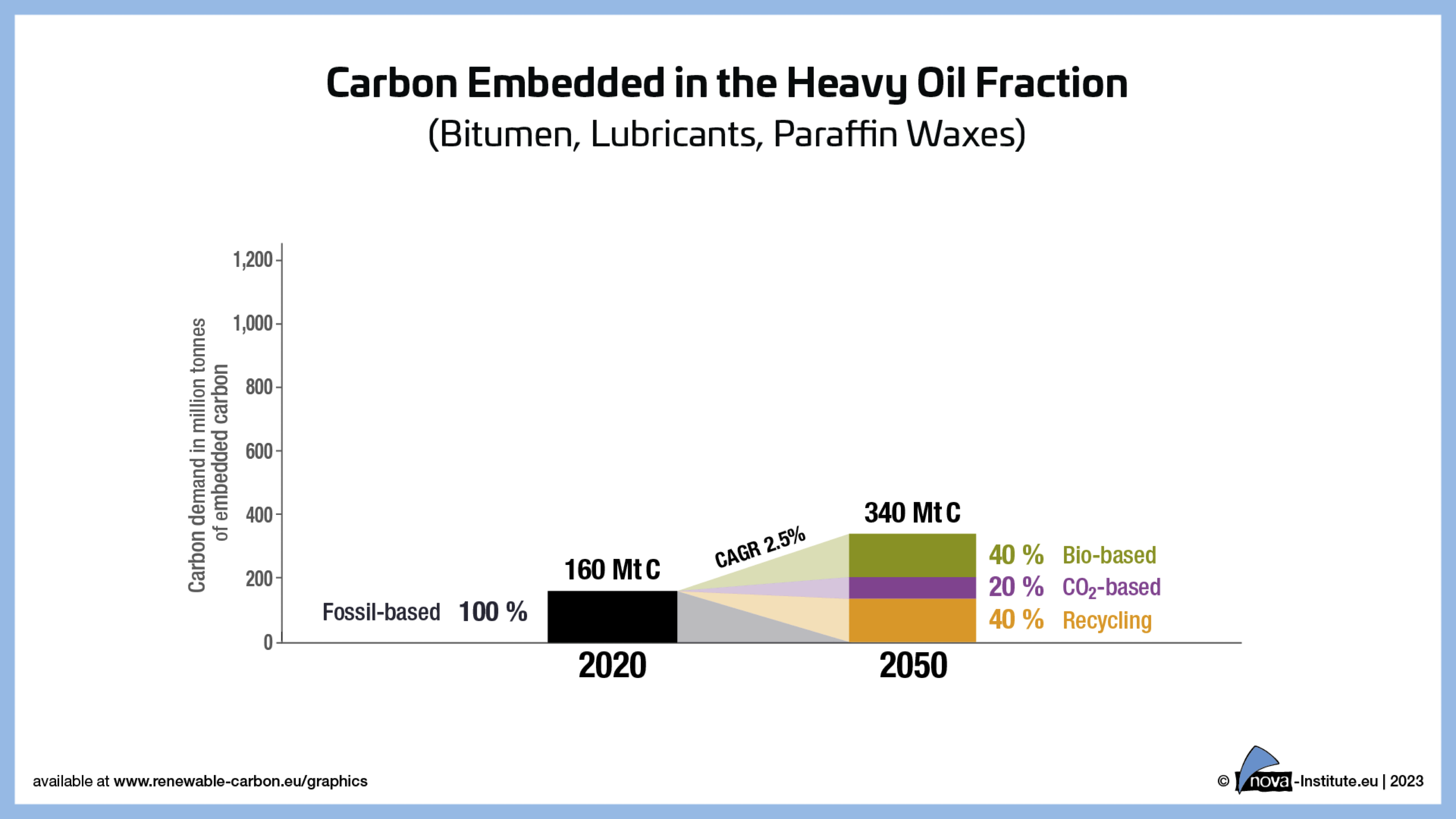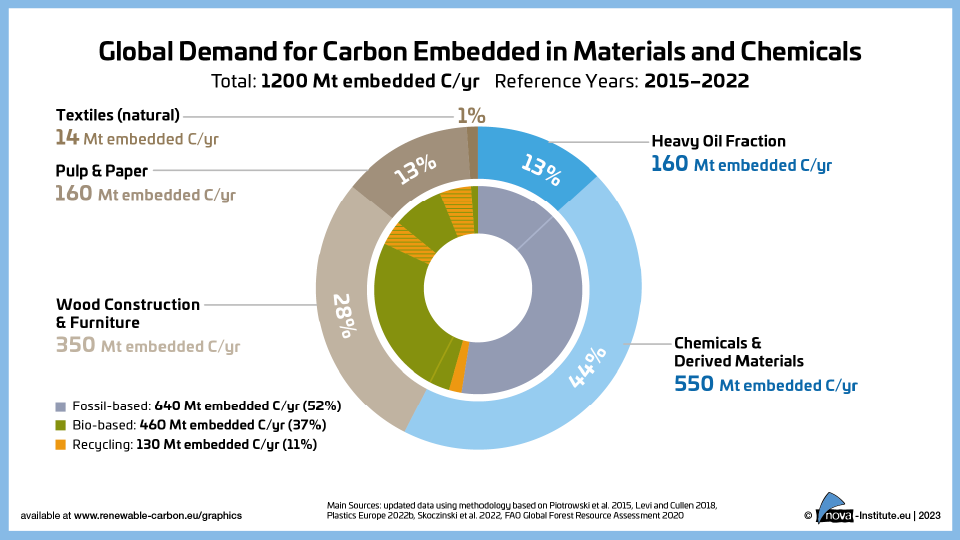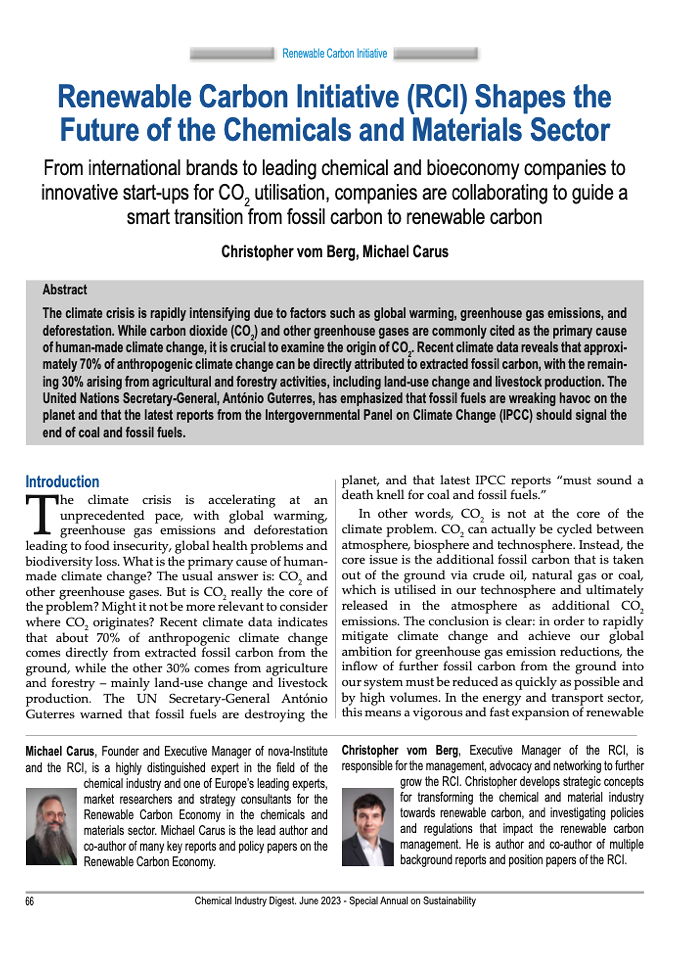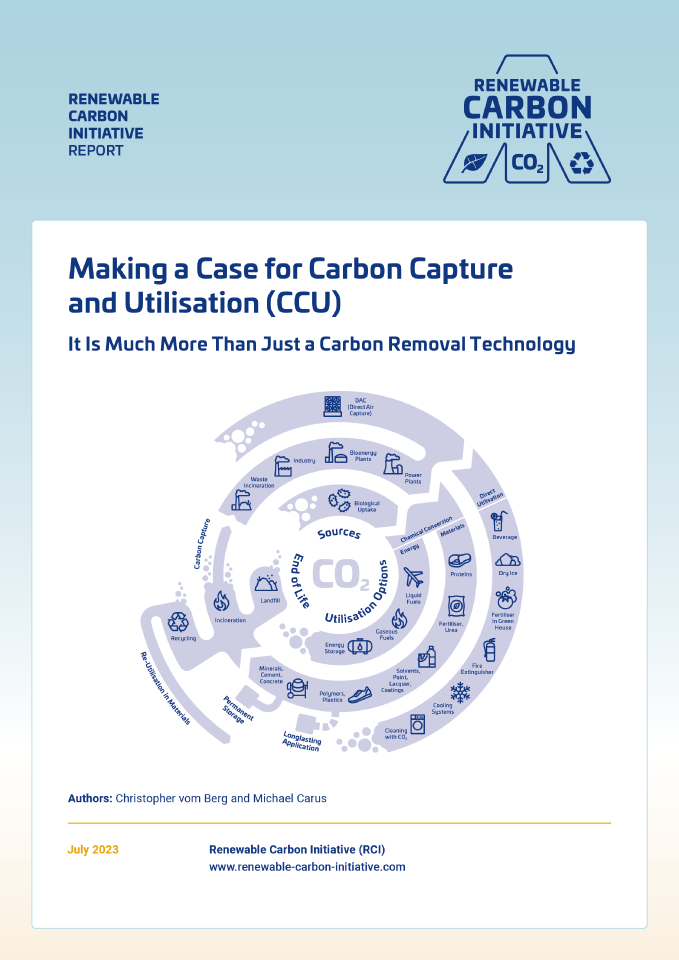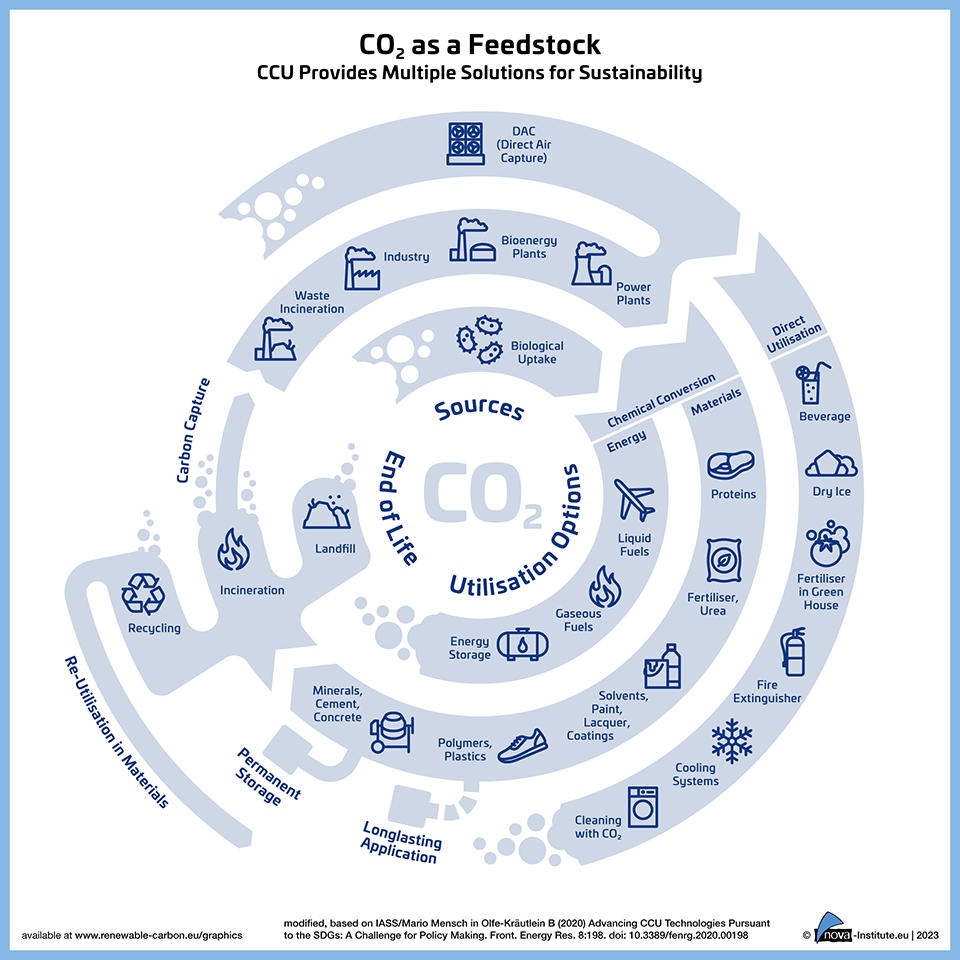Showing 21–40 of 322
-
RCI’s scientific background report: “The use of food and feed crops for bio-based materials and the related effects on food security – Promoting evidence-based debates and recognising potential benefits” (June 2023) Short Version
Markets & Economy, Policy, Sustainability & Health, Technology
2 Pages
536 Downloads
536 Downloads
2023-11
FREE
536
DownloadsPromoting Evidence-based Debates and Recognising Potential Benefits
This short version of the scientific paper highlights on two pages new insights into a hotly debated topic and urges for careful and evidence-based debates.
The paper aims to show that the well-known biomass debate is flawed, subjective and not fully based on evidence. What is detrimental to food security are, according to the World Food Programme in 2023, climate change, conflict, extreme inequalities in wealth distribution, heavy dependence on food imports from industrial countries, overconsumption of meat, losses along the value chain and the impact of the COVID pandemic. Competition between biomass uses is not mentioned among the relevant causes.
The use of biomass for industrial applications, does have the potential to replace fossil feedstocks and thus contribute to the urgently needed reduction of fossil carbon emissions into our atmosphere to mitigate climate change.
While not denying the dire need to combat world hunger, the authors of the paper argue that using food and feed crops for chemicals and materials will not necessarily exacerbate food insecurity, and in fact has the potential to cause multiple benefits for local and global food security, climate mitigation and other factors:
- The climate wins – Bio-based materials are part of the solution to achieve climate change mitigation.
- Land productivity wins – The competition between applications is not for the type of crop grown, but for the land.
- The environment wins – due to increased resource efficiency and productivity of food and feed crops.
- Farmers win – because they have more options for selling stock to different markets.
- Market stability wins – due to increased global availability of food and feed crops.
- Feed security wins – due to the high value of the protein-rich co-products of food and feed crops.
- Food security wins – due to the increased overall availability of edible crops that can be stored and flexibly distributed.
-
Explorative Scenario – Carbon Embedded in Chemicals and Derived Materials (PNG)
Markets & Economy, Policy
1 Page
481 Downloads
481 Downloads
2023-10
FREE
Free Shipping481
DownloadsFigure from the RCI Carbon Flows Report 2023The nova October 2023 update shows a steady increase in the share of bio-based chemicals from 8% in 2020 to 20% in 2050. CO2-based chemicals require a lot of investment to become relevant after 2030, with strong growth between 2040 and 2050. The recycling of virgin fossil chemicals and plastics dominates the recycling sector until 2035. After 2035, bio-based, CO2-based and recyclates increasingly dominate the recycling sector. -
Bio-based Polymers & Plastics Production 2022 Worldwide (PNG)
Markets & Economy
1 Page
423 Downloads
423 Downloads
2023-10
FREE
423
Downloads -
239 Downloads
2023-10
FREE
239
Downloads -
“Bio- and CO2-based Economy: feedstocks, processes and products” − Graphic – Update
Markets & Economy, Sustainability & Health, Technology
1 Page
3072 Downloads
3072 Downloads
2023-09
FREE
3072
Downloads -
Consumption of Embedded Carbon in the Global Chemical Industry (PNG)
Markets & Economy, Policy
1 Page
85 Downloads
85 Downloads
2023-07
FREE
Free Shipping85
DownloadsFigure from the RCI Carbon Flows Report 2023
-
Global Supply for Embedded Carbon in Chemicals and Derived Materials by Type of Feedstock (PNG)
Markets & Economy, Policy
1 Page
107 Downloads
107 Downloads
2023-07
FREE
Free Shipping107
DownloadsFigure from the RCI Carbon Flows Report 2023
-
Consumption of Embedded Carbon for Global Chemicals and Derived Materials by End-user Application (PNG)
Markets & Economy, Policy
1 Page
74 Downloads
74 Downloads
2023-07
FREE
Free Shipping74
DownloadsFigure from the RCI Carbon Flows Report 2023
-
Consumption of Embedded Carbon for Global Chemicals and Derived Materials by Carbon Feedstock (PNG)
Markets & Economy, Policy
1 Page
70 Downloads
70 Downloads
2023-07
FREE
Free Shipping70
DownloadsFigure from the RCI Carbon Flows Report 2023
-
Consumption of Embedded Carbon for Global Polymers (PNG)
Markets & Economy, Policy
1 Page
85 Downloads
85 Downloads
2023-07
FREE
Free Shipping85
DownloadsFigure from the RCI Carbon Flows Report 2023
-
Carbon Demand for Embedded Carbon in the EU-27 Chemical Industry (PNG)
Markets & Economy, Policy
1 Page
89 Downloads
89 Downloads
2023-07
FREE
Free Shipping89
DownloadsFigure from the RCI Carbon Flows Report 2023
-
Explorative Scenario – Carbon Embedded in the Heavy Oil Fraction. (PNG)
Markets & Economy, Policy
1 Page
40 Downloads
40 Downloads
2023-07
FREE
Free Shipping40
DownloadsFigure from the RCI Carbon Flows Report 2023
-
Global Demand for Carbon Embedded in Materials and Chemicals (PNG)
Markets & Economy, Policy
1 Page
154 Downloads
154 Downloads
2023-07
FREE
Free Shipping154
DownloadsFigure from the RCI Carbon Flows Report 2023
-
Renewable Carbon Initiative (RCI) Shapes the Future of the Chemicals and Materials Sector
Markets & Economy, Policy
3 Pages
115 Downloads
115 Downloads
2023-07
FREE
Free Shipping115
DownloadsFrom international brands to leading chemical and bioeconomy companies to innovative start-ups for CO2 utilisation, companies are collaborating to guide a smart transition from fossil carbon to renewable carbon. The Renewable Carbon Initiative (RCI) (www.renewable-carbon-initiative.com) was created after observing the struggles of the chemical and material industriesin facing the enormous challenges to meet the climate goals set by the European Union and the sustainability expectations held by societies around the globe. It was clear that the industry has to go beyond using renewable energy and also consider their raw materials. Because decarbonisation is not an option for the chemical and material sector, as it is entirely based on the use of carbon, an alternative strategy is required: defossilisation through renewable carbon – carbon from above the ground: biomass, CO2 and recycling.
-
RCI’s scientific background paper: “Making a case for Carbon Capture and Utilisation (CCU) – It is much more than just a carbon removal technology” (July 2023)
Markets & Economy, Policy, Sustainability & Health, Technology
48 Pages
1461 Downloads
1461 Downloads
2023-07
FREE
Free Shipping1461
DownloadsThis scientific background paper highlights the importance of Carbon Capture and Utilisation (CCU) and the need for more political recoginition and support for CCU.
CCU enables the substitution of fossil carbon in sectors where carbon is necessary, supports the full defossilisation of the chemical and derived material industries, creates a circular economy, reduces the emission gap, promotes sustainable carbon cycles, fosters innovation, generates local value and stimulates job growth.
CCU is much more than a carbon removal technology: the technology offers multiple solutions to pressing problems of our modern world and can support several Sustainable Development Goals if implemented properly.
In total, 14 different benefits and advantages of CCU are described and discussed in the paper. A key advantage is that CCU supplies renewable carbon to – and thereby substitutes fossil carbon in – sectors that will require carbon in the long run. This includes the chemical sectors and products like polymers, plastics, solvents, paints, detergents, cosmetics or pharmaceuticals. But CCU is also essential to a long-term net-zero strategy, crucial for creating a sustainable circular economy, providing solutions for scaling up the renewable energy system, and bringing multiple benefits for innovation and business.
The relevance of the technology is not yet accepted in Europe, but the RCI wants to make a very clear statement: CCU is a central pillar for the biggest transformation of the chemical and material industry since the industrial revolution.
DOI No.: https://doi.org/10.52548/VYKR3129
-
323 Downloads
2023-07
FREE
Free Shipping323
DownloadsCarbon Capture and Utilization (CCU) provides multiple solutions for sustainability
-
226 Downloads
2023-07
FREE
Free Shipping226
DownloadsThis poster shows examples of CO2-based products.
-
Embedded Carbon Demand for Main Sector (PNG)
Markets & Economy, Policy, Sustainability & Health, Technology
1 Page
96 Downloads
96 Downloads
2023-06
FREE
96
Downloads -
Traffic Light Sustainability Risk Evaluation of Bio-based Feedstocks (PNG)
Markets & Economy, Policy, Sustainability & Health, Technology
1 Page
210 Downloads
210 Downloads
2023-06
FREE
210
Downloads -
Corn and its Applications (PNG)
Markets & Economy, Policy, Sustainability & Health, Technology
1 Page
92 Downloads
92 Downloads
2023-06
FREE
92
Downloads

